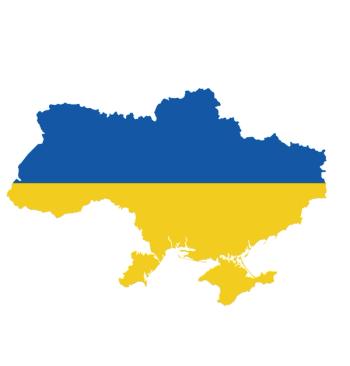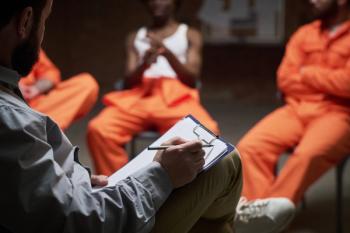
Lighting a Candle in Newtown
The Sandy Hook Promise . . “To do everything in our power to be remembered--not as the town filled with grief and victims; but as the place where real change began.”
Our hearts are broken;Our spirit is not.
And it is with this knowledgethat we are able to move forwardwith purpose . . . and strength . . .
The Sandy Hook promise
As my car pulled in to Newtown, Connecticut, my first thought was, this is a beautiful town; I would enjoy living here. I was a bit early for the panel presentation, so I walked into a local coffee shop. On my way in, I passed several “banners of hope,” and the
The young man behind the coffee shop counter was friendly and cheerful, greeting me with a warm smile. In fact, everyone in town greeted me with courtesy and kindness. This was to be a reliable constant during my visit for a public conversation as part of the Sandy Hook Promise. Members of the community of Newtown created this organization soon after the mass shooting on December 14, 2012, at
Born of sense of responsibility, internal strength, and desire to honor their lost loved ones, the Newtown community gave birth to a promise. Part of the mission of the Sandy Hook Promise is to have an open dialogue on all of the relevant issues, and to include various and opposing views. My colleagues and I had been invited by Sandy Hook Promise leaders to give a presentation titled “Violence, Loss, and Emotional Healing: A Buddhist Perspective.”2
The goal of our presentation was to explore the commonalities of
•Lama Kathy Wesley: a Buddhist minister and nationally recognized teacher of the Tibetan Buddhist practice of Lojong, which trains the mind in compassion and loving kindness
•Lama Tsultrim Yeshe: a Buddhist monk and retired prison chaplain, who is known throughout North America for his Tibetan Buddhist teachings on the nature of forgiveness and healing emotional wounds
•David Kaczynski: a humanitarian, a poet, and my friend. David is a bit of a hero to me, having devoted himself to spreading kindness and compassion. He has been a staunch mental health advocate and has run a shelter for runaway/homeless youth. He knows more about what it is like to be the family member of an offender than most could ever imagine-he is the brother of Theodore Kaczynski, the so-called “Unabomber,” whose 17-year reign of violence came to an end after David and his wife, Linda, read the Unabomber's manifesto in the Washington Post and reported their suspicions to the FBI.
The presentation was held at the
At the appointed time, I realized that the Congregation Adath Israel synagogue was packed to standing room only. I looked out among the faces of the community, which were welcoming and genial, yet understandably serious and concerned. A short while before, a community leader had informed me that “things were still raw,” and so I felt some trepidation. Fortunately, Lama Kathy, Lama Tsultrim, and David Kaczynski all spoke before me. The perspectives they shared were extremely well received by the audience and focused on healing from
All of us thought it best to begin our talks with a personal reflection on some of the meaningful reasons that we found ourselves before the Newtown community that day, and then speak from our various disciplines about healing from trauma. I began by acknowledging that the Sandy Hook Promise states: “Our hearts are broken, but our spirit is not,” and how humbled I was by this. I felt compelled to relate that it was amazing that all across the country, and indeed the world, the people of Newtown are revered. They have demonstrated the Buddhist ideal of opening their hearts and minds, dealing with fear and working toward peace.
Part of the Sandy Hook Promise mission is to help the community heal, and so the psychiatrist in me wanted to share some of what is known about this vital task from a mental health viewpoint. Although there is not yet strong scientific data to support the notion that community support improves well-being in the wake of a
(1) a sense of safety
(2) a sense of calm
(3) a sense of personal and community efficacy
(4) feelings of social connectedness
(5) a realistic sense of optimism
These key coping efforts had been demonstrated by the Norwegian community not even a year and a half before the Sandy Hook tragedy.4
On July 22, 2011, Norway experienced immeasurable loss and trauma when a lone, angry individual killed over 70 innocent people in a planned dual attack. Many of the victims were young teenagers attending a Youth League event. Immediately after, there was a remarkable and courageous response, much like that of Newtown.5 The post-tragedy reflections of the medical first responders were focused on collective responses of “strong engagement and feelings of togetherness.”6 It was very important to them at the time “to be compassionate and caring,” in addition to enduring “the pain of others, without having a solution.”7 The Norwegian psychiatric professionals understood clearly how to assist with the early signs of acute stress and unbearable grief. In particular, they knew that one of their most valuable contributions would be “to listen,” and help survivors “find new strength and meaning in a changed life.”8
There were many Newtown teachers in the audience who demonstrated a strong interest in being a part of the healing and recovery process. Teachers have a profound effect on the lives of their students and can create positive, transforming possibilities for them.9 The Newtown teachers were impressive, and several spoke about ways that they had been serving as a support system for students, assuming this role with profound determination.
Like physicians, they were committed to the best interests of those they were trying to assist. Indeed, teachers are valuable, cost-effective providers for clinically informed interventions after
The audience wondered about how best to reach out to show support for families of victims, and-in a memorable display of compassion-to the family members of the offender. Here, David Kaczynski spoke with great authority and empathy, giving a helpful and insightful answer that concluded with, “We will always love our family members, but we detest what they did.”
Resilience and healing after severe trauma
After the formal question-and-answer session, the audience expressed great interest in
Fortunately, resilience may be more prevalent than previously believed.15 In the wake of horrendous tragedy, peoples’ belief systems may change. For example, they may experience changes to their view of the world “as they knew it,” and their views on human nature, spirituality, and their own identity. A grieving process of variable length is a necessity, yet many will still need to
The people of Newtown impressed upon me their interest in hearing how the rest of the country and the world view them as the epitome of strength, resilience, and compassion. They made it clear that they did not want to be viewed as helpless victims. Later, as I read back over the Sandy Hook Promise, I realized more fully how central this issue was for the community: “To do everything in our power to be remembered-not as the town filled with grief and victims; but as the place where real change began.”
The Newtown community had known from the beginning what they needed to do, and were well along the path of establishing a sense of efficacy and optimism. They had quickly realized that striving for these goals by creating their own mission of healing was of vital importance.17 This is why I thought it so fitting that Lama Yeshe chose an epigraph, attributed to Confucius, as the opening to the presentation: “It is better to light one small candle than to curse the darkness.”
References:
References1. The Sandy Hook Promise.
2. “Violence, Loss and Emotional Healing: A Buddhist Perspective,” March 13 At Adath Israel. Newtown Bee. March 1, 2013.
3. Vicary AM, Fraley RC. Student reactions to the shootings at Virginia Tech and Northern Illinois University: Does sharing grief and support over the internet affect recovery? Pers Soc Psychol Bull. 2010;361:1555-1563.
4. Hobfoll S, Watson P, Bell CC, et al. Five essential elements of immediate and mid-term mass trauma intervention: empirical evidence. Psychiatry. 2007;70:283-315.
5. Sollid SJ. When worst comes to worst-the long road home. Tidsskr Nor Legeforen. 2011;131:1748.
6. Thrana F. Endure the pain of others. Tidsskr Nor Legeforen. 2011;131:1747-1748.
7. Haug C. Reflections. Tidsskr Nor Legeforen. 2011;131:1739.
8. Dyb G. Lean forward and be there. Tidsskr Nor Legeforen. 2011;131:1751-1752.
9. Gillespie M. Student-teacher connection: a place of possibility. J Adv Nurs. 2005;52:211-219.
10. Wolmer L, Hamiel D, Barchas JD, et al. Teacher-delivered resilience-focused intervention in schools with traumatized children following the second Lebanon War. J Trauma Stress. 2011;24:309-316.
11. Wolmer L, Hamiel D, Laor N.
12. Wu G, Feder A, Cohen H, et al. Understanding resilience. Front Behav Neurosci. 2013;7:10.
13. Bonanno G. Resilience in the Face of Potential Trauma. Curr Dir Psychol Sci. 2005;14:135-138.
14. Agaibi CE, Wilson JP. Trauma, PTSD and resilience: a review of the literature. Trauma Violence Abuse. 2005;6:195-216.
15. Bonanno GA, Galea S, Bucciarelli A, Vlahov D. Psychological resilience after disaster: New York City in the aftermath of the September 11th terrorist attack. Psychol Science. 2006;17:181-186.
16. Jordan K.
17. Grills-Taquechel AE, Littleton HL, Axsom D. Social support, world assumptions, and exposure as predictors of anxiety and quality of life following a mass trauma. J Anxiety Disord. 2011;25:498-506.
Newsletter
Receive trusted psychiatric news, expert analysis, and clinical insights — subscribe today to support your practice and your patients.













